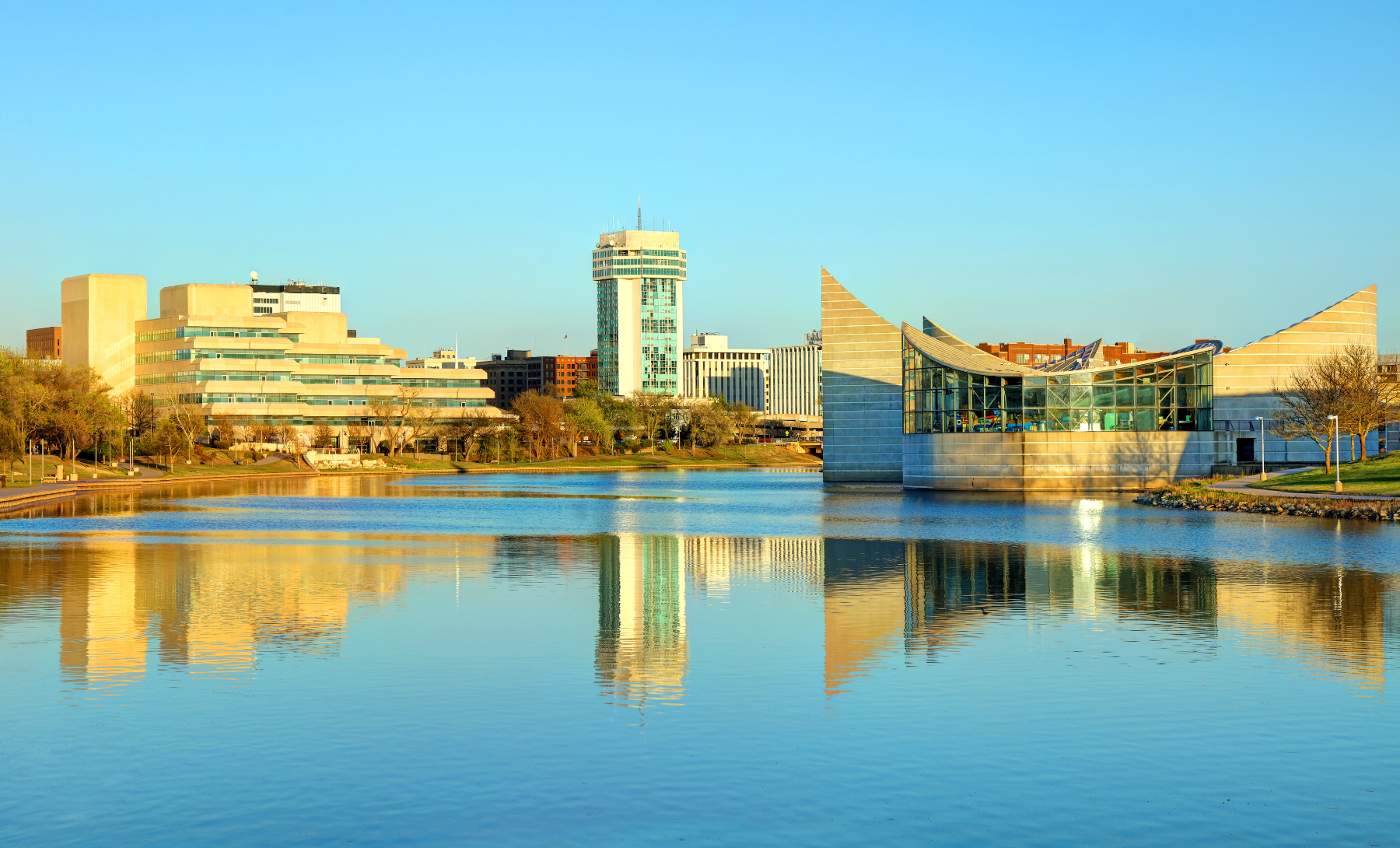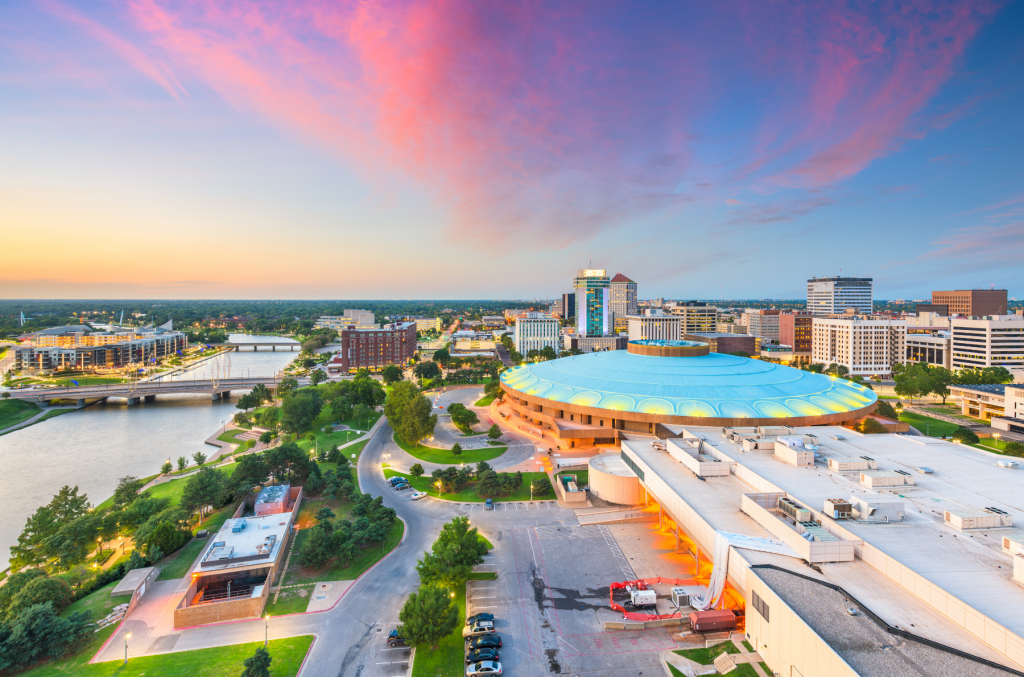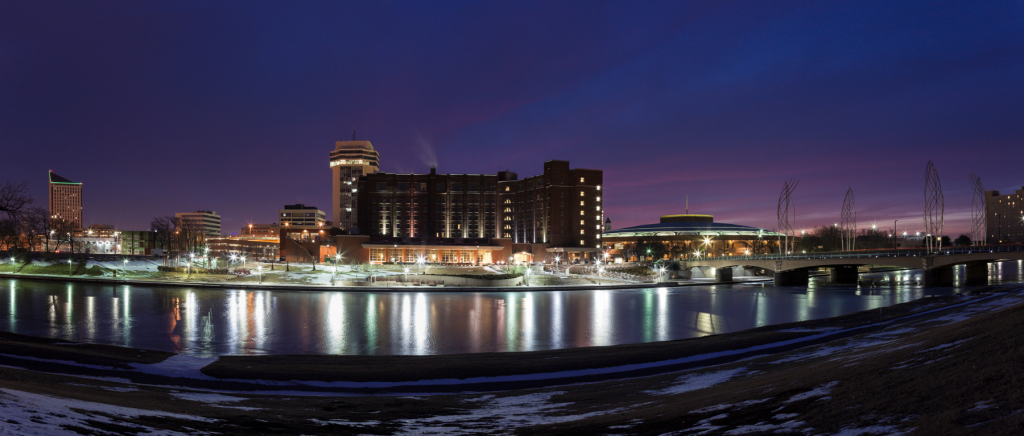
Wichita: The Air Capital of the World With an Old West Heart
Published on January 18, 2024
Along with our local partner, KAGW TV, eATLAS is proud to offer the Discover Wichita’s Old Town and Douglas Design Districts Adventure. This 10-stop scavenger hunt explores the city’s rich history, cultural diversity, and artistic present.
By Dave Lifton (@daveeatschicago)
In 1863, two years after Kansas was admitted to the Union, a pioneer and trader named James R. Mead settled in a location marked by the confluence of the Arkansas and Little Arkansas Rivers. Five years later, he set up a trading post and named the town Wichita, after the Indian tribe that had occasionally lived in the area.
Wichita quickly became the northernmost point on the Chisholm Trail, a stretch used for cattle drives from Texas to railyards in Kansas. By 1870, the town was re-incorporated as a city. One of the 124 signers of its charter—and the only woman—was Catherine McCarty, whose son, Henry, would gain national infamy shortly after moving to Santa Fe, N.M. as William H. Bonney, aka Billy the Kid.
Wichita’s early growth led to the founding of another town, Delano, on the west bank of the Arkansas River. The two became archetypical rough-and-tumble Old West boomtowns, with saloons and brothels, and little law enforcement. By the middle of the decade, a local named Wyatt Earp was hired as a police officer in Wichita. But after an 1876 fistfight with a political rival, Earp was fired and he relocated 150 miles west to Dodge City, where he made his name.
Delano was annexed into Wichita in 1880, by which time the cattle business had moved west due to the construction of new rail lines, and an economic downturn happened. But as the 20th century approached, Wichita shifted to agriculture and manufacturing, and the city bounced back stronger than ever.
In the mid-1910s, aviation found a home in Wichita when Clyde Cessna opened a plant in the city. This coincided with the discovery of oil in nearby Butler County, which led to considerable local investment in the burgeoning industry. By 1923, three more airplane manufacturers had formed in Wichita, with the involvement of aviation pioneers like E.M. Laird, William Burke, Lloyd Stearman, George Weaver, and Walter Beech.

Wichita soon earned the nickname as the “Air Capital of the World,” but the Great Depression had a devastating impact on aviation. However, America’s involvement in World War II revived the city, with 30,000 planes manufactured in the town from 1941-45.
These days, Wichita is currently responsible for 70 percent of the general aircraft made in the U.S. Major companies like Spirit AeroSystems (Wichita’s biggest employer), Learjet, Airbus, Collins Aerospace, and Textron Aviation (who produce Cessna and Beechcraft) are headquartered in the city, and its history with the industry is on display at the Kansas Aviation Museum in the building that had served as Wichita’s airport from 1935 until 1954.
Today, residents and visitors can journey back in time in the Old Town District. The historic neighborhood consists of 20 blocks of red brick streets and warehouses, many of which were built in the late 1800s, that were revitalized starting in the 1990s. Today, Old Town is Wichita’s main nightlife area, with more than 100 locally owned businesses, including restaurants, shops, clubs, and public plazas. People can learn about the importance of the railroad industry to the growth of the region at the Great Plains Transportation Museum, and the Keen Kutter warehouse, which dates back to 1906, is now the Old Town Hotel.

If Old Town is a symbol of Wichita’s past, the adjacent Douglas Design District reflects its present and future. Over the past decade, E. Douglas Ave.—Wichita’s main street—has been transformed into a colorful, arty three-mile stretch featuring more than 500 businesses, including boutiques, galleries, craft breweries, coffee shops, design studios, and more. Along the way, the street is brightened by more than 100 murals, all made by local artists. And only a few blocks away is the Frank Lloyd Wright’s Allen House, which was completed in 1918 and can be toured.
With a population of 400,000 and 650,000 in the metropolitan area, Wichita is the largest city in Kansas. Throughout its history, it has weathered many challenges through innovation and forward-thinking. The Old Town and Douglas Design Districts are the most recent examples, blending the past, present, and future.

The Adventure starts when you say it does.
All eATLAS Adventures are designed and built by experienced eATLAS Whoa!Guides. They're always on. Always entertaining. And always ready to go.
Check out our Adventures!